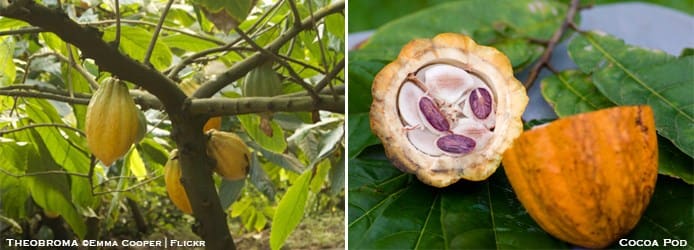Addiction. Can cacao cause addiction? Of course! A delicious, physiological addiction, triggered by the alkaloids it contains, which are also responsible for the bitter base flavour of the beans. In particular, theobromine, a euphoriant, and to a lesser degree, caffeine, a stimulant.
Butter. Cocoa butter is the fattiest part of the bean. It's the white outside border inside an individual cocoa bean. It is extracted through pressing and exposure to high temperatures.
Cocoa. This is the word that refers to the cacao once it has been heated. It generally refers to the powdered form, which has usually been exposed to higher temperatures than cacao powder. In today's language it's also used as a synonym for 'cacao'.
Dark side. According to the International Labor Rights Forum, more than 200,000 children between the ages of 5 and 15 work on the African cacao plantations in conditions that threaten their health. The documentary 'The Dark Side of Chocolate' revealed the child trafficking and slave labour involved in the production of cacao.
Equator. Cacao grows at the equator: nearly all cacao trees grow within 20 degrees of the equator, and 75% of those grow within eight degrees.
Fermentation. Fermentation of the cacao beans is the process that occurs before drying, and varies depending on the type of cacao desired. It is crucial to achieving high-quality chocolate.
Gods. The cacao tree, a small evergreen, is Theobroma cacao, a name that derives from the Greek 'theos', gods, and 'broma', food: the food of the gods.










